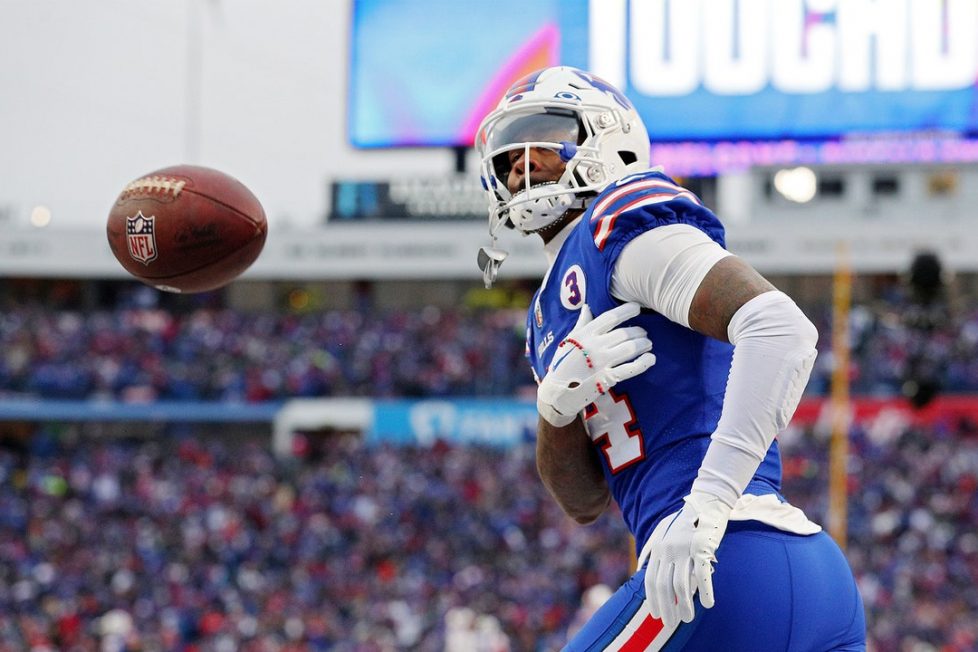The NFL Is Training Fans to Love Streaming

NFL commissioner Roger Goodell stood on stage at Lincoln Center last week to trumpet the dawn of the league’s streaming age. The NFL’s partnership with YouTube TV, which will carry the league’s prized Sunday Ticket package starting this season, “is only the beginning,” Goodell said. “The fact is,” Goodell told advertisers gathered at YouTube’s upfront, “millions of football fans are on YouTube to catch all things NFL.”
Basketball fans, on the other hand, were outraged later that night when YouTube TV experienced apparent technical issues that caused viewers to miss the final stretch of Game 1 of the NBA Eastern Conference Finals between the Miami Heat and Boston Celtics. With about four minutes remaining, the game went to commercial and “the stream just lost it,” according to Sports Illustrated’s Andy Nesbitt. “Many fans saw the same ad starting and stopping for what felt like an endless amount of time, and it never came back for the rest of the game,” Nesbitt wrote.
The outage invited visions of a doomsday scenario for Sundays this fall. Warren Sharp, who covers the NFL for Fox Sports, said the league is courting a “disaster” with Sunday Ticket’s move to YouTube TV. The NFL had no formal comment on the mishap, although a spokesman said that the league is in “constant contact” with YouTube and is “confident in their technology capabilities.”
The NFL also appears confident about where live sports are heading. Its deal with YouTube, which is owned by Google parent Alphabet, is just one part of the league’s ever-widening streaming portfolio—and another example of Big Tech’s increased footprint in live sports. After hammering out a seven-year deal in December, YouTube TV will pay the NFL roughly $2 billion annually for the Sunday Ticket package of out-of-market games that DirecTV controlled for nearly three decades. This move follows the NFL kicking off an 11-year partnership with Amazon, which is reportedly paying around $1 billion annually to be the home of Thursday Night Football. And a few days before Goodell’s appearance at the YouTube upfront, the league announced that Peacock, NBC’s streaming service, will have exclusive rights to a prime-time playoff game in January. Hans Schroeder, executive vice president and chief operating officer of NFL Media, said the playoff game on Peacock “will be transformative for sports on digital.”
In moving a prime-time playoff game away from linear television, where it would surely garner big ratings, the NFL is beginning to “habituate its audience to watching big games on streaming,” said John Kosner, a former digital media executive at ESPN who now heads a media and sports consultancy. “The NFL has long been the king of broadcast television and has long prioritized reach,” said Kosner. “Now they’re trying to train their audience to understand that they can find the product on streaming.”
The NFL’s Peacock announcement was one of a pair of industry-rattling developments last week that brought the future of live sports into focus. The Wall Street Journal later reported that ESPN, which has built an empire on its lucrative agreements with cable providers, is preparing to launch a new streaming service that will offer full access to the flagship channel. In the span of a few days, the NFL and ESPN, two paragons of traditional TV, signaled that the streaming era is no longer buffering.
The NFL and ESPN have each enjoyed practically unrivaled dominance over the linear television landscape. Eighty-two of the 100 most watched broadcasts in the United States last year were NFL games, which was up from 75 in 2021, and 71 the year before that. ESPN, meanwhile, receives more than $9 per average customer in fees from providers, far more than any other other cable channel. But the growing number of viewers who have spurned traditional cable packages in favor of streaming platforms has forced a recalibration, even for juggernauts like the NFL and ESPN.
The digital marketing agency Adtaxi found that over 30% of viewers intended to watch the Super Bowl this year via streaming, eclipsing cable (29%) and broadcast (26%) for the first time in the survey’s history. Comcast, the parent company of NBCUniversal, reported last month that it lost 614,000 cable TV subscribers in the first quarter this year, while subscriptions to Peacock climbed to 22 million. In its report last week, The Wall Street Journal suggested that ESPN’s new streaming service could augur “cable TV’s demise,” but it did not provide a timetable for its launch. Subsequent reporting by Andrew Marchand of the New York Post indicates that the release will come in either 2025 or 2026. The traditional pay TV model might not go kaput overnight, but it is flickering.
In the immediate term, the live sports experience will continue to be a chimerical enterprise of direct-to-consumer and linear viewing options. “We’re getting into this bifurcated world where we still have people on pay television, although that number is shrinking,” Kosner said. “Meanwhile, streaming is ascendant and sports has begun to take its place there.”
As the number of pay TV customers has dwindled in the last decade, the NFL and ESPN have been preparing for a streaming-centric future. The NFL first streamed one of its games in 2015, when it partnered with Yahoo. Its deal with Amazon, which runs through 2033, was “the moment the industry crossed the Rubicon,” Kosner said.
ESPN already has an existing streaming service, ESPN+, which launched in 2018 and has grown to 25 million subscribers. But that service doesn’t offer the full suite of ESPN programming, and in recent months, executives at both the network and its parent company, Disney, have telegraphed a direct-to-consumer streaming option that would include everything from its linear channels. ESPN chairman Jimmy Pitaro told Bloomberg that the release of such a service was a “a ‘when,’ not an ‘if.’” In an earnings call with investors earlier this month, Disney CEO Bob Iger called it an “inevitability.”
